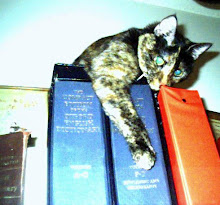Every Thursday, I post a very large photograph of some corner of space captured by the Hubble Space Telescope and available online from the picture album at HubbleSite, followed by poetry after the jump.
This week, I'm including information from Wikipedia's Star of Bethlehem:
The Star of Bethlehem, also called the Christmas Star, is a star in Christian tradition that revealed the birth of Jesus to the magi, or "wise men", and later led them to Bethlehem. According to the Gospel of Matthew, the magi were men "from the east" who were inspired by the appearance of the star to travel to Jerusalem. There they met King Herod of Judea, and asked where the king of the Jews had been born. Herod then asked his advisers where a messiah could be born. They replied Bethlehem, a nearby village, and quoted a prophecy by Micah. While the magi were on their way to Bethlehem, the star appeared again. Following the star, which stopped above the place where Jesus was born, the magi found Jesus with his mother, paid him homage, worshipped him and gave gifts. They then returned to their "own country".
In modern times, astronomers have proposed various explanations for the star. A nova, a planet, a comet, an occultation, and a conjunction (gathering of planets) have all been suggested. Some scholars question the historical accuracy of the story and argue that the star was a fiction created by the author of the Gospel of Matthew.
According to modern translations, the magi told Herod that they saw the star "at its rising", which suggests that they observed an astronomical object. The traditional translation of this phrase was "in the East," that is, when the magi were is still resident in their eastern homelands. This interpretation is less likely because the Greek word for "east" used in this passage is singular, yet plural in those passages where it refers to the magi's homelands.
In 1614, German astronomer Johannes Kepler determined that a series of three conjunctions of the planets Jupiter and Saturn occurred in the year 7 BC. Although conjunctions were important in astrology, Kepler was not thinking in astrological terms. He argued (incorrectly) that a planetary conjunction could create a nova, which he linked to the Star of Bethlehem. Modern calculations show that there was gap of nearly a degree between the planets, so these conjunctions were not visually impressive. An ancient almanac has been found in Babylon which covers the events of this period, but does not indicate that the conjunctions were of any special interest.
Other writers suggest that the star was a comet. Halley's Comet was visible in 12 BC and another object, possibly a comet or nova, was seen by Chinese and Korean stargazers in about 5 BC. This object was observed for over seventy days with no movement recorded. Ancient writers described comets as "hanging over" specific cities, just as the Star of Bethlehem was said to have "stood over" the "place" where Jesus was (the town of Bethlehem).
Another Star of Bethlehem candidate is Uranus, which passed close to Saturn in 9 BC and Venus in 6 BC. This is unlikely because Uranus moves very slowly and is barely visible with the naked eye.
A recent hypothesis states that the star of Bethlehem was a supernova or hypernova occurring in the nearby Andromeda Galaxy. Although supernovae have been detected in Andromeda, it is extremely difficult to detect a supernova remnant in another galaxy, let alone obtain an accurate date of when it occurred.NOTE: Whatever the origin of the story, it is not linked to December 25th since Jesus was not born on that date. Nor on January 6th as is celebrated by Eastern Christianity. [See Wikipedia's Nativity of Jesus.] The day and year of Jesus's birth has never been historically pinpointed, and even Biblical sources are in contradiction. Best guess seems to be spring or early summer, 6-4 BC. The decision to claim December 25 or January 6 occurred around 300 BC, presumably in an attempt by church leaders to replace the Roman celebration of Saturnalia or Europe's matriarchal celebration of the Winter Soltice which extends back at least 30,000 years. Strong remnants of both non-christian traditions endure on modern Western Christmas practices. Light a candle, decorate a tree, give presents, eat some fruitcake, and you're carrying on cultural practices that far predate Christianity.
Going to Bed
by George Bilgere
I check the locks on the front door
and the side door,
make sure the windows are closed
and the heat dialed down.
I switch off the computer,
turn off the living room lights.
I let in the cats.
Reverently, I unplug the Christmas tree,
leaving Christ and the little animals
in the dark.
The last thing I do
is step out to the back yard
for a quick look at the Milky Way.
The stars are halogen-blue.
The constellations, whose names
I have long since forgotten,
look down anonymously,
and the whole galaxy
is cartwheeling in silence through the night.
Everything seems to be ok.







No comments:
Post a Comment